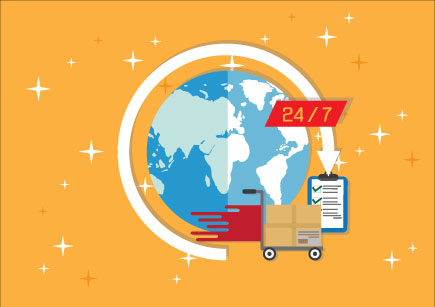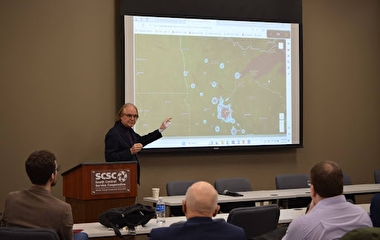Today, moving freight accounts for more than a third of the world’s transport energy—and that share is growing. The rise in global trade, online retailing, and business-to-business delivery is not only changing how goods are moved but also the type of goods moved and how far or frequently they are transported.
Currently, this massive movement of goods throughout the economy relies on an intricate—and largely decentralized— multimodal network of truck, rail, ship, and airplane delivery. However, change is on the horizon. In a study sponsored by the Minnesota Department of Transportation (MnDOT) and the Minnesota Local Road Research Board, U of M experts outline the important impacts these changes will have on the road network and transportation infrastructure.
“There is hope that new methods of organization and proposed standardization will increase efficiency of freight movement and give rise to a new era of goods transport,” says Adam Boies, an assistant professor in the Department of Civil, Environmental, and Geo- Engineering (CEGE). “In the years to come, we expect that advances in logistics systems will be enabled by new technologies, approaches, and the desire for increased efficiency.”
Changes in the way logistics operations are organized will help drive advances. New information technology permits the sharing of data between and across businesses, which in turn drives efficiency and leads to fuller vehicles. “This may reduce the distance traveled by heavy goods vehicles per unit of GDP, which may in turn reduce costs and entice more demand for delivered goods,” says CEGE professor David Levinson, the study’s principal investigator. “Ultimately, this could mean fewer trips by individual consumers and more deliveries. We anticipate the result will be a net reduction in distance traveled.”
The study also examined some of the potential drivers for changes in the freight industry as a result of logistics reorganization. These include supply chain pooling, in which individual logistics operations are shared between collaborators, and the Physical Internet Initiative, which seeks to create standards for packaging to enable the homogenization of freight technology. “While both of these advancements have the potential to increase logistics efficiency by reducing the transportation of empty loads, they will also increase truck weights—which may increase pavement damage,” Boies says.
Other transportation and logistics changes will result from shifts in the ways businesses and consumers receive goods and services, including business-to-business systems and technologies that enable a sharing economy, same-day delivery services, 3-D printing, and “last mile” delivery services. In addition, a growing portion of purchases can be delivered directly over the Internet. “Delivery is easily automated for data-based goods like books, music, video, and software,” Levinson says. “Purchases that could once only be completed by moving things can now be done by moving data.”
The research is part of a multi-pronged study that analyzed the technological shifts altering surface transportation and the implications for Minnesota. Other contributors included associate professors Jason Cao and Yingling Fan of the Humphrey School of Public Affairs. Their high-level white papers are compiled in a final report: The Transportation Futures Project: Planning for Technology Change. Future issues of Catalyst will share findings from other chapters.




